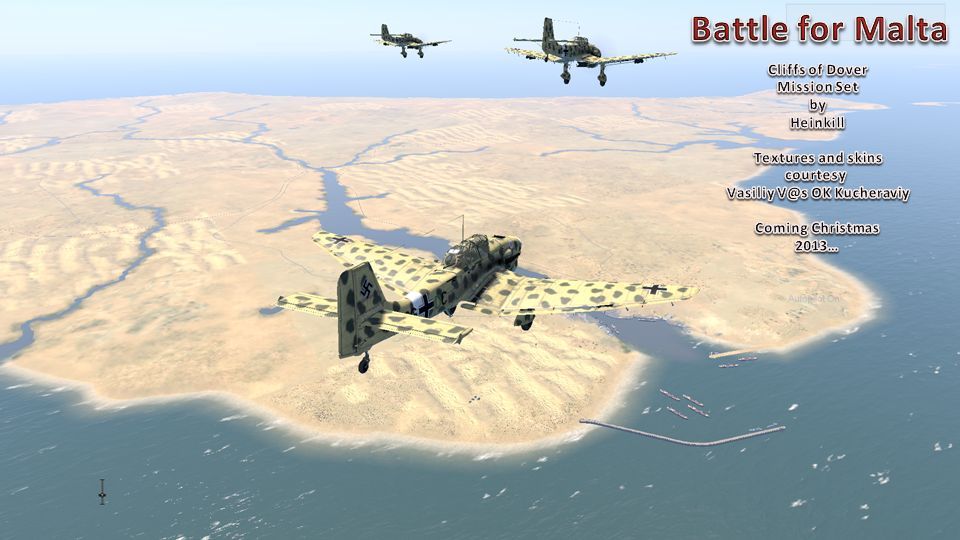
After two beta releases of the popular Battle for Malta mod for Cliffs of Dover, the team of Vasiliy Kucheraviy and Fred Williams has now released the final version of Battle for Malta, just in time for the holidays!
SEE VIDEO HERE: http://youtu.be/QATppu7wyuc
The mod comes in two parts: the modded game files
https://app.box.com/s/esq9gvxl5ogd8m8ni3ld
or
http://sdrv.ms/17831zL
And the 28 mission Single Mission Pack
http://airwarfare.com/sow/index.php/downloads/viewdownload/7-single-player-missions/560-malta-mod-full-mission-set-final
For an insight into the depth of the research that has gone into this mission pack, see the scenario descriptions for each mission below:
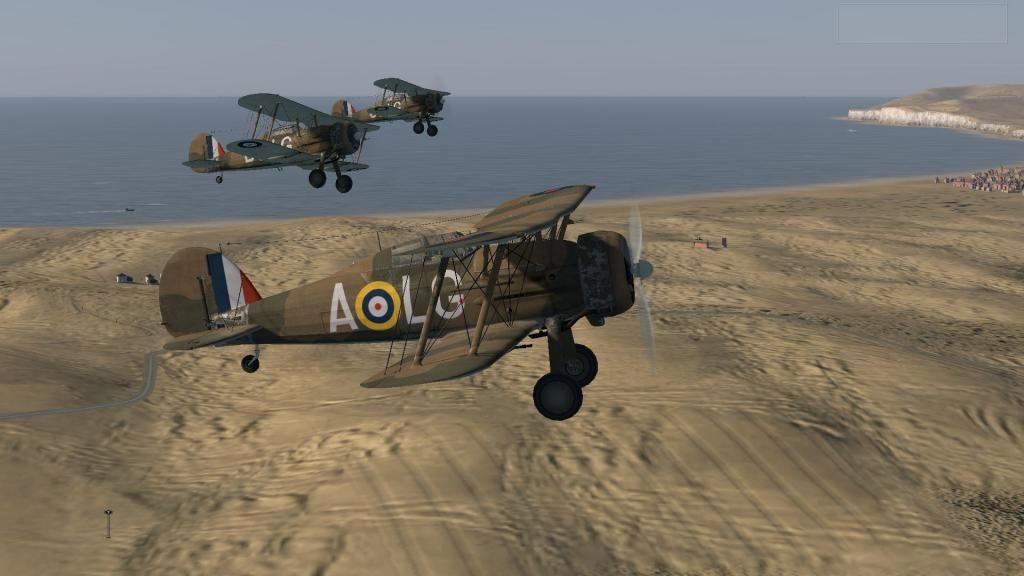
Mission 1: The Battle Begins!
"Iwo Jima stands as the most bombed spot in the Pacific War. Malta stands as the most bombed spot in history."
James Holland.
17 June 1940
These are dark days for the Allies. In Britain, the RAF is facing off against the Luftwaffe's Luftflotte 2, 3 and 5, after having been beaten comprehensively back from France.
On June 10, Italy declared war, and on June 11, the first air attack on Malta was launched.
The RAF has only a handful of aircraft to defend the island, and the Regia Aeronautica is targeting Hal Far airfield and the ships of Malta's Grand Harbour with impunity.

Malta 02 - RAF Reinforces
'We shall defend our island home and with the British Empire around us shall fight on unconquerable until the curse of Hitler is lifted from the brows of men"
Times of Malta, 18 June 1940.
22 June 1940
6 more Hurricanes have arrived at Hal Far airfield to supplement the Gladiators of Hal Far flight. But as fast as they arive, they are being destroyed, either in the air, or on the ground, by the far superior numbers of Regia Aeronautica bombers and fighters.
The Regia Aeronautica however has learned that with the arrival of the Hurricanes, its bombers require escorts, and must carefully plan their ingress and egress to avoid the worst of the flak, which though light, is quite accurate.
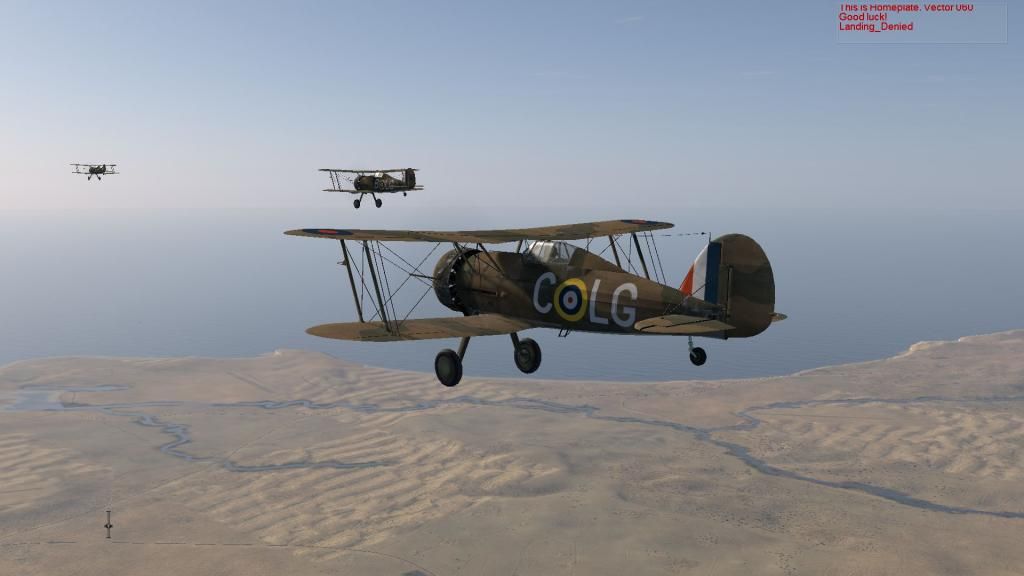
Malta03 - The Few
"Valiantly climbing into the skies each day to meet the Italian bombers were George Burges and his companions of the Malta Fighter Flight...Harry Kirk, an RAF corporal working at headquarters on Scots Street, saw the Gladiators flying in tight formation and thought they looked rather like the three silver hearts on a brooch of his mother's. Each heart had a name - Faith, Hope and Charity. The names stuck."
James Holland
23 June 1940
The fighters on Malta, though few, are troubling the Regia Aeronautica.
The RA are now conducting fighter sweeps over Malta to try to draw the RAF up, and destroy them in the air, or failing that, on the ground.
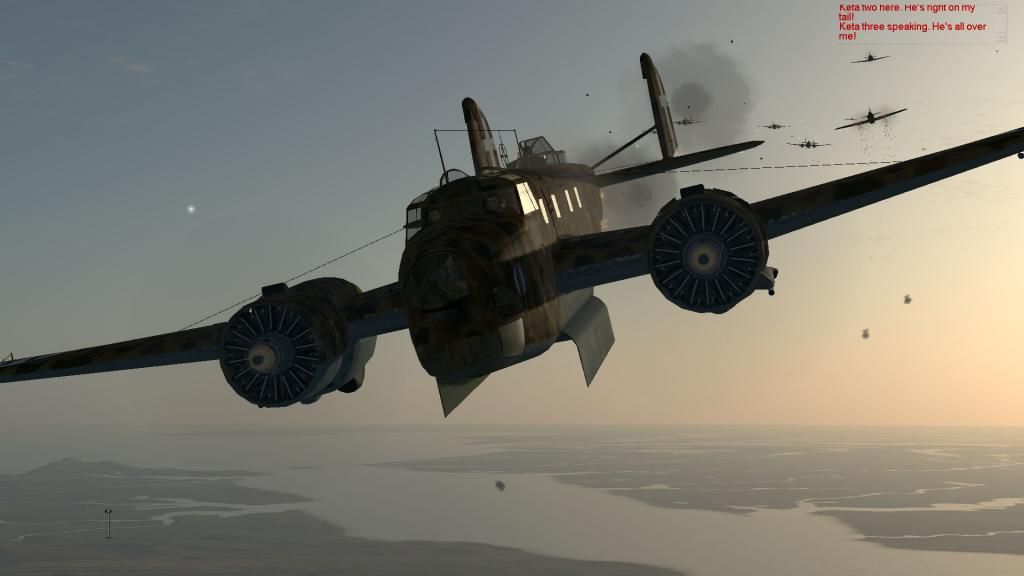
Malta 04 - Find the Fleet
"The Regia Aeronautica appeared once more, high in the skies above. There were hundreds of them, and over the next few hours all the British ships came under fire..."
James Holland
7 July 1940
A British destroyer flotilla with fuel tenders is searching for the Italian fleet in waters south of Malta.
They were last sighted at grid reference E4, heading SE.
The Regia Aeronautica has despatched bombers to locate and attack them.
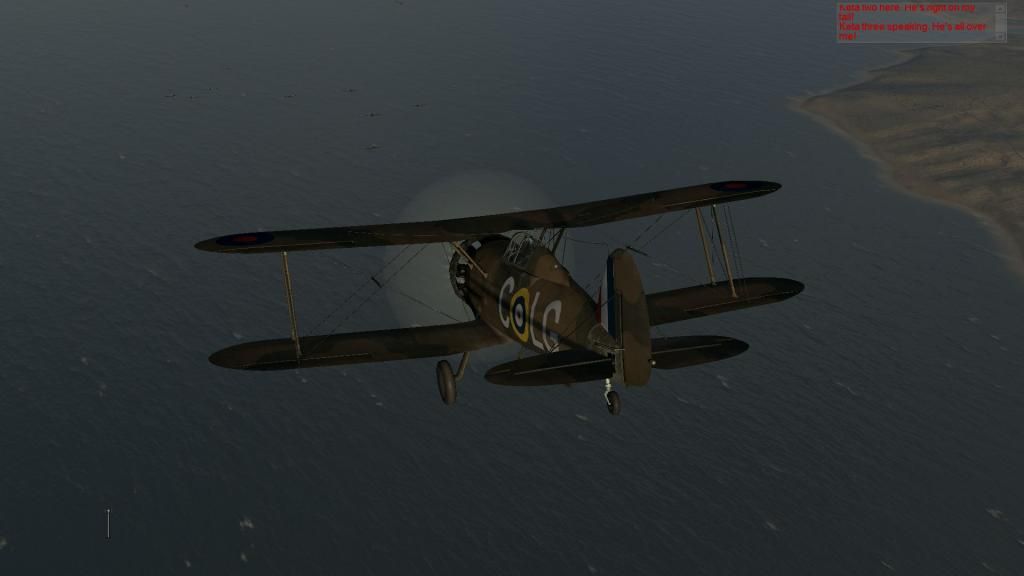
Malta 05 - the Darkest Day
"On the last day of the month, one of the Gladiators was shot down. A witness said the plane 'burnt just like a magnesium flare'...
James Holland
31 July 1940
The RAF Hal Far Flight is down to 1 Hurricane and 2 Gladiators, only flying because of parts salvaged from other machines.
The Regia Aeronautica is flying over Malta almost at will, attacking shipping and airfields. Only the AAA is troubling the Italians.
Civilian casualties are high and the Governor, Lt Gen WIlliam Dobbie, has appealed to the British government for more fighter aircraft, and AAA guns.

"At Luqa conditions were considerably more basic, and when pilots did take off, the whole procedure was something of a fiasco. Luqa had been littered with debris to deter any enemy landing and buses were driven on and off the runway whenever it was needed, both when pilots were scrambling but when they were landing too."
James Holland
Malta 06 - Reinforcements
16 August 1940
The pleas of the Maltese government have been heard. With the arrival of 15 Hurricanes and eighteen pilots, the Hal Far Flight has now been commissioned as 261 Squadron at Luqa. The Governor's plea for more AAA guns has also been heard.
Italian bomber forces have been diverted to support the navy at the Battle of Calabria, but fighter sweeps over the island, and isolated bomber attacks, are continuing.
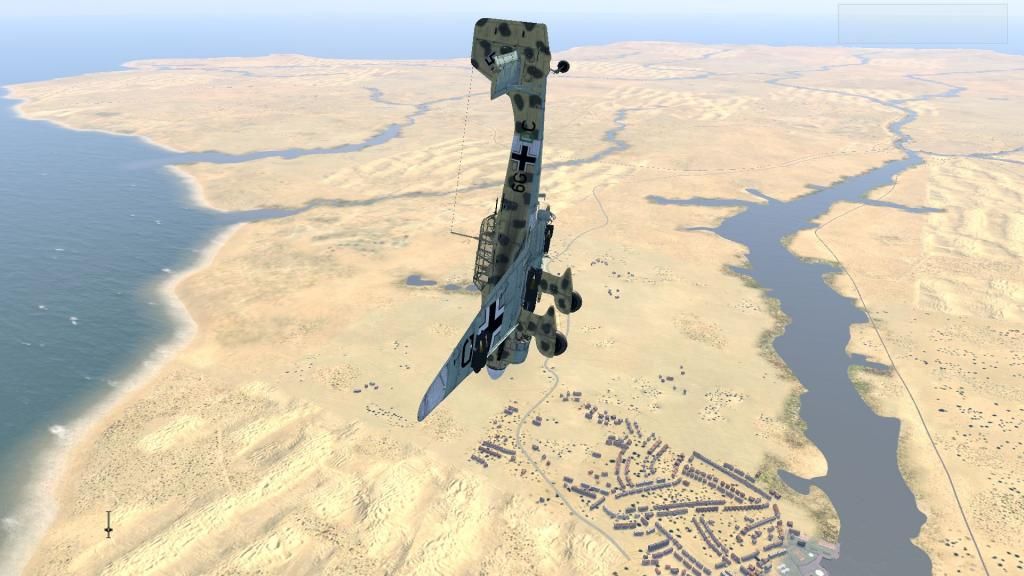
Malta07 - Forza Stuka!
"Fortunately the new pilots of 261 squadron were given time to acclimatise to their new surroundings...without being unduly stretched by the Italians. It was a curious decision by the Italians for as the raids lessened, so Malta was growing slowly in strength."
James Holland
20 September 1940
Three Blenheims have arrived at Takali airfield to form 431 reconnaisance flight, led by flight leader Adrian Warby.
The aircraft will be used for fleet protection and enemy shipping identification, as well as photo recon missions over enemy airfields and ports.
Italian Stukas have also been brought into the attack. After training at Graz in Austria, 15 of the aircraft were moved to Italy to join the seige of Malta.
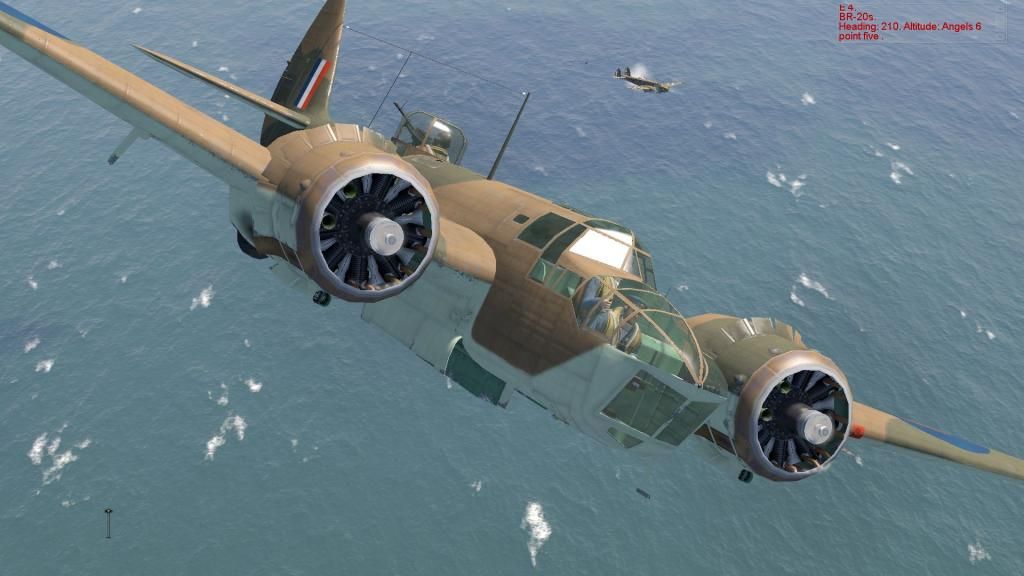
Malta08 - Taranto recon
The attack on Taranto: Part 1
"Several reconnaissance flights by Blenheim bombers (of the RAF's No. 431 General Reconnaissance Flight) flying from Malta, confirmed the location of the Italian fleet. These flights produced photos on which the intelligence officer of HMS Illustrious spotted previously unexpected barrage balloons; the attack plan was changed accordingly."
10 November 1940
Regia Aeronautica attacks continued sporadically throughout October, targeting shipping, the Harbour and airfields. Civilian losses were mounting, with a stray bomb hitting a packed bus, killing 40 people.
Italian torpedo bombers were being used to effect against the British convoys, while the British Admiralty was planning a daring attack on the Italian naval base at Taranto with torpedo bombers of its own.

Malta09 - Taranto attack
The attack on Taranto: Part 2
"The first wave of 12 aircraft led by Lieutenant Commander M. W. Williamson RN of 815 Sqn., left Illustrious just before 21:00 hours on 11 November 1940, followed by a second wave of nine about 90 minutes later.
The first wave, which consisted of a mixture of six torpedo bombers, was split into two sections when three of the bombers and one torpedo bomber strayed from the main force while flying through thin clouds. The second group continued to Taranto independently..."
11 November 1940
The Italian fleet has been identified at Harbour in Taranto, counting six battleships and several cruisers.
The first wave of a British torpedo bomber strike has already hit the fleet, damaging several ships.
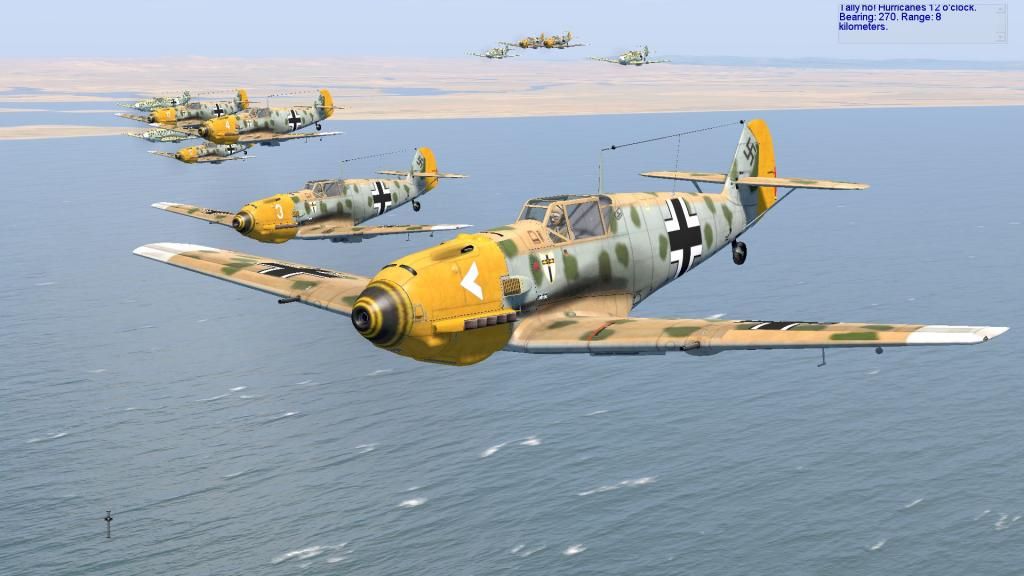
Malta 10 - Fliegerkorps X
"From the day the Germans arrived, the entire Island rocked to the shock of battle."
- Malta dockyard worker ET Hedley
On 10 December 1941, Fliegerkorps X, under the command of Hans Ferdinand Geisler, and with support of his chief of staff Major Martin Harlinghausen, was ordered to Sicily in order to attack Allied shipping in the Mediterranean. By the start of the first German operation, Geisler had 95 aircraft and 14,389 men in Sicily. Geisler persuaded the OKL to give him four more dive-bomber gruppen (Groups). On 10 January he could muster 255 (179 serviceable) aircraft including 209 dive and medium bombers.
By 2 January 1941, the first German units reached Trapani on Sicily's southern coast. The Luftwaffe's two units were both Junkers Ju 87 Stuka Gruppen (Groups). The first was I./Sturzkampfgeschwader 1 and II./Sturzkampfgeschwader 2 (I and II Group Dive Bomber Wings 1 and 2). The units numbered some 80 Ju 87s. Stabsstaffeln of Sturzkampfgeschwader 3 (StG 3) and 7/JG27 arrived. Oberstleutnant Karl Christ, Geschwaderkommodore of StG 3 gave orders to intercept heavy shipping, ports and airfields on Malta.
On 10 January 1941, the first Luftwaffe attacks began.
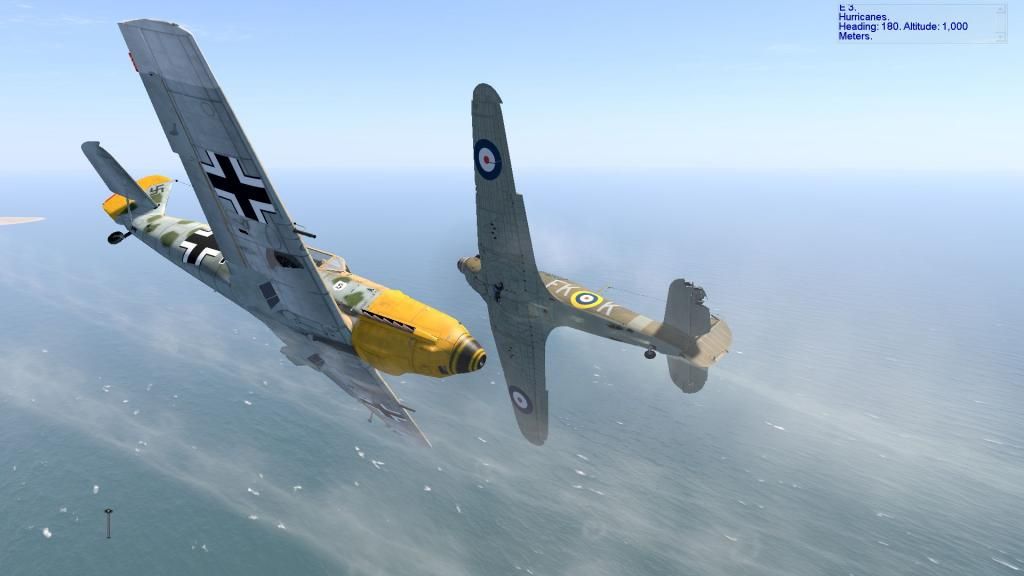
Malta 11 - 261 Sq beefs up
"With only 16 Hurricanes serviceable, and a couple of Gladiators, the brunt of defence was borne by the anti aircraft gunners around the harbour."
- James Holland
By 13 January 1941 the total number of Hurricanes on Malta had increased to 16, and two Gladiators were still flyable thanks to cannibalised spare parts.
Blenheims of the Malta Reconnaisance Flight were based out of Luqa, as were Wellingtons of the Special Strike Unit.
But the Luftwaffe and Regia Aeronautica were destroying the British aircraft as quickly as they were being landed.
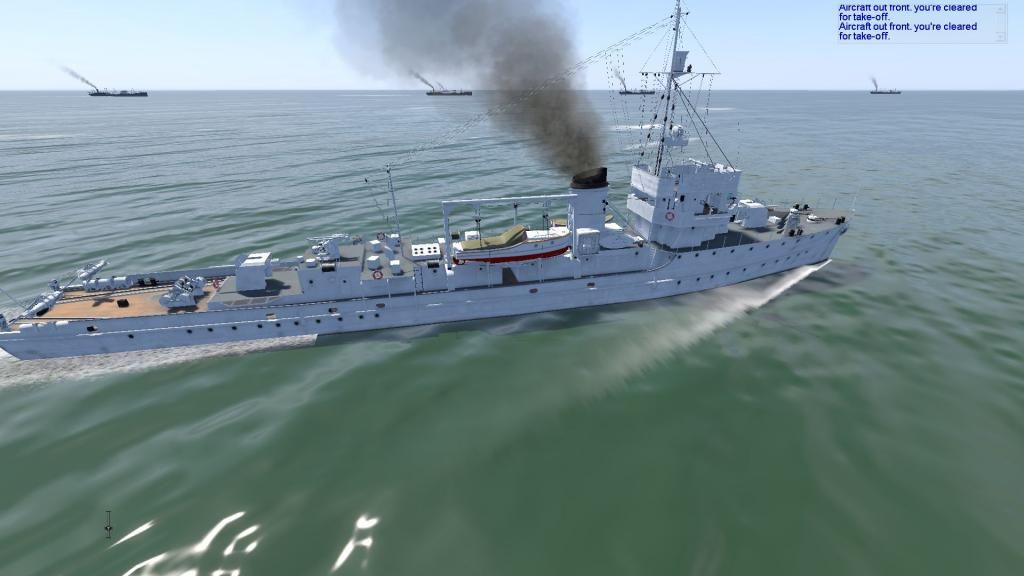
Malta 12 - The Illustrious
"The German attack lasted just six and a half minutes, and in that time the aircraft carrier was struck six times."
- James Holland
In early January the Luftwaffe was presented with the opportunity to attack the aircraft carrier HMS Illustrious. when British Operation Excess was launched, which included a series of convoy operations by the British across the Mediterranean Sea.
Soon they were within range of the Luftwaffe's Sicilian bases. II./StG 2 sent 43 Ju 87s with support from I./StG 1. Ten Italian SM 79s had drawn off the carrier's Fairey Fulmar fighters while the escorting cruiser HMS Bonaventure sank the Italian torpedo boat Vega.
Some 10 Ju 87s attacked the carrier. Witnessed by Andrew Cunningham, C-in-C of the Fleet from HMS Warspite, the Ju 87s scored six hits. One destroyed a gun, another hit near her bow, a third demolished another gun, while two hit the lift, wrecking the aircraft below deck, causing explosions of fuel and ammunition. Another went through the armoured deck and exploded deep inside the ship.
Two further attacks were made without result. Badly damaged, but with her main engines still intact, she steered for the now dubious haven of Malta. The attack lasted six minutes; killed 126 crew members and wounded 91.
Within sight of Malta, torpedo bombers also attacked the carrier, but were driven off by intense anti-aircraft fire.
(Gameplay note: as there is no aircraft carrier in CoD, a large freighter has been substituted.)

Malta 13 - Knockout blows
"Oh my God, my God, those bombs," recalls Michael Montebello, a child at the time. Despite being deep underground, the whole island appeared to shake and tremble. Michael sat there, terrified, a ten year old boy hugging his knees tightly into his chest, with the smell of cordite filling his nose and lungs, wondering whether the shelter would collapse.
- James Holland
On 18 January Kesselring ordered the Luftwaffe to concentrate on RAF airfields at Luqa, Hal Far and Takali.
No fewer than 11 raids were launched, and both RA and Luftwaffe fighters, dive bombers and bombers were sortied.
Standing against them were 16 Hurricanes of 261 Sq, and a Blenheim of 69 recon unit. There were no more Gladiators remaining on Malta.
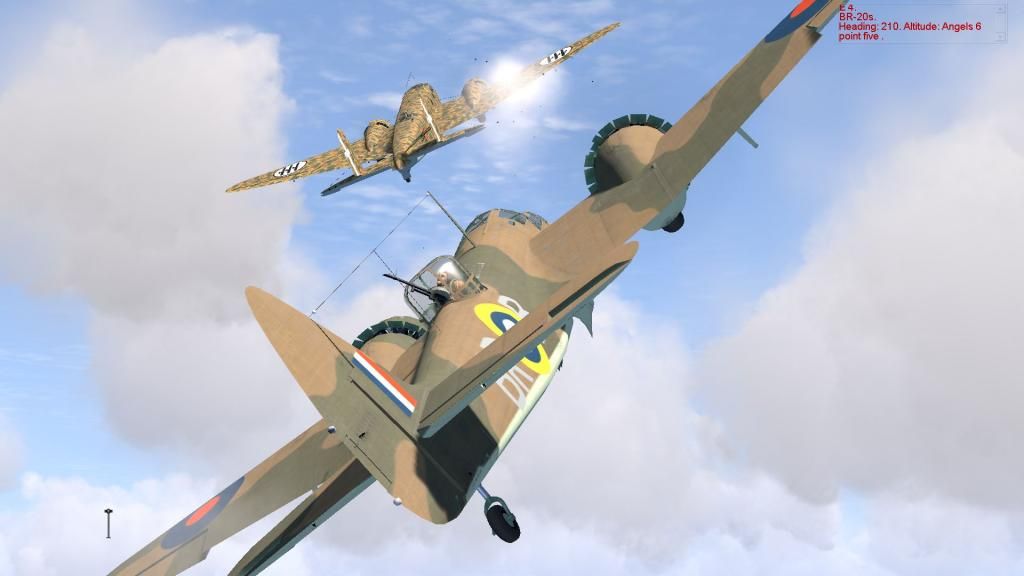
Malta 14 - 69 Sq is formed
"431 Recon Flight was given full squadron status, and renamed 69 Squadron. More planes and personnel were arriving...and were kept busy photographing Italian airfields, keeping a check on the rising numbers of Luftwaffe planes there."
- James Holland
On 30 Jan with the arrival of Blenheims on the island, the RAF formed 69 recon squadron, to help direct submarine attacks on Axis convoys, and prepare for bombing raids on Axis ports and airfields in Sicily and Libya.
At the same time the Luftwaffe was flying men and machines into Catania airfield in Sicily in preparation for an offensive to seal the fate of Malta once and for all.
(Historical note: the aircraft first used for recon out of Malta were Marylands - here the Blenheims are a stand in.)
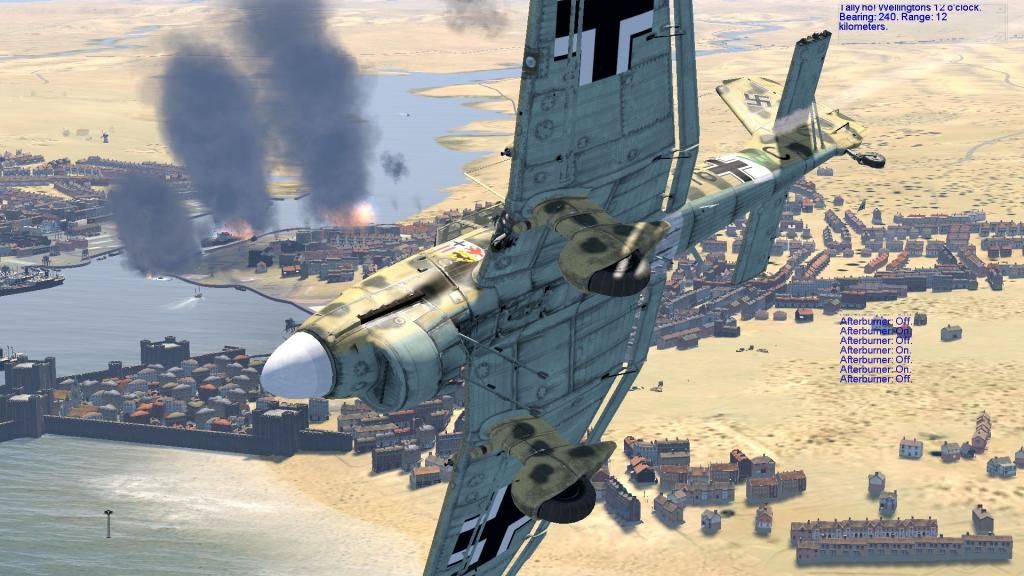
Malta 15 - LW buildup complete
"In a pre-emptive move, a number of Luqa-based Wellington bombers made a strike on the Axis airfield of Catania. The defenders of Malta held their breath..."
- James Holland
6 February 1940 saw the first attack by Wellingtons of the RAF Special Strike Squadron on the Catania airfield in Sicily. Although Axis forces had noted the arrival of the Wellingtons and destroyed several on the ground, it had been assumed they were in transit to Egypt, and not that they would be used to attack Axis forces in Italy.
The attack coincided with the arrival of the full complement of Luftwaffe forces at Catania including 7 staffel of JG26 led by Joachim Munchenberg, Destroyers (Bf110s) of ZG26, Ju88s of LG1 and He111s of KG26.
Standing against them was a single squadron of Hurricanes.
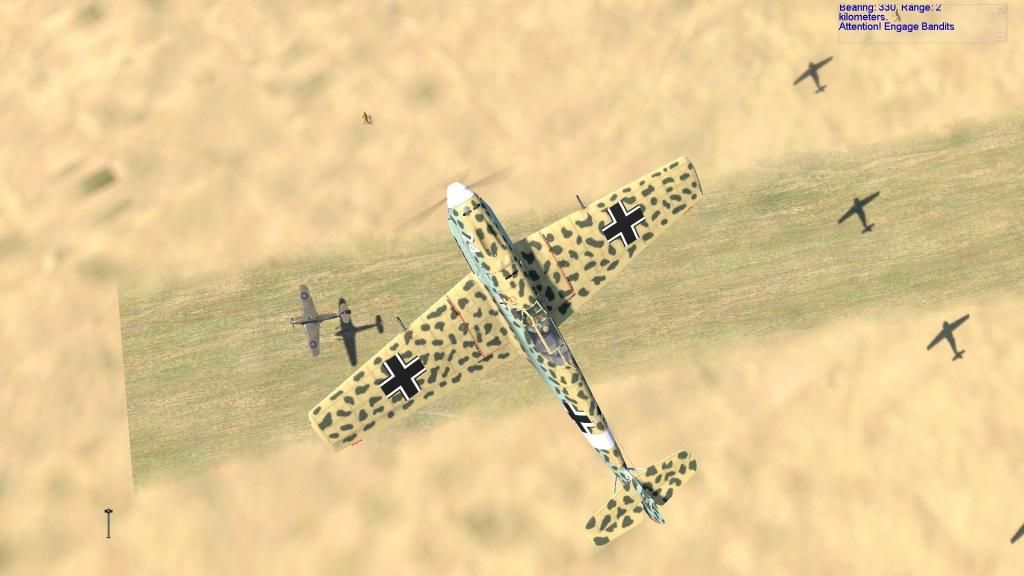
Malta 16 - Munchenberg's men
"It was in the beggining of March that the Germans began using the Messerschmitt 109 fighters in numbers over Malta, and they immediately began to make their presence felt."
- James Holland.
March 7 1941 - The full complement of 7 Staffel JG26, commanded by Joachim Munchenberg, went into action over Malta.
The small complement of Hurricanes, cannibalised and near obsolescent, patched and patched again, rose to meet them.
Spare parts, fuel and oil was not reaching the island in sufficient quantities to maintain the RAF force on the island more than a few more days. Troops, pilots and groundcrew had resorted to raising their own crops and livestock to supplement their rations of bully beef and biscuits.
The toll of the incessant bombing and strafing on the civilian population, was growing. The only good news is that AAA defences on the island have finally been increased.
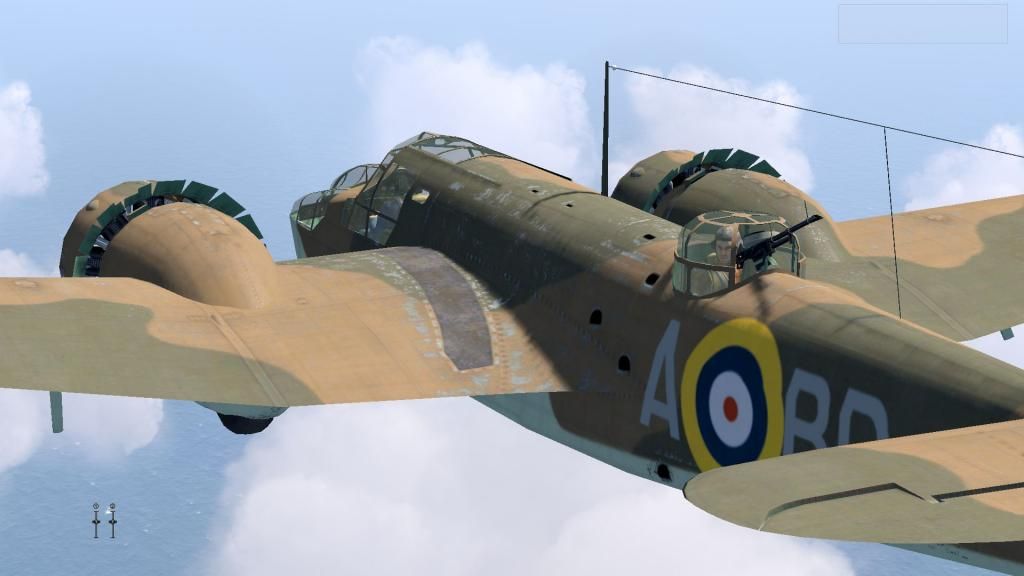
Malta 17 - Attack on Tripoli
"A full moon was due on the night of 17-18 March, the ideal condictions for RAF bombers to launch an attack..."
- James Holland
March 17 1941, Malta based Wellingtons from the Malta Special Strike Force attacked Tripoli Harbour in Libya, after a long flight overwater, in darkness.
RAF raids based out of Malta, together with submarine and naval activity, was hampering Germany's ability to supply its forces in Africa.
The raid redoubled Marshal Kesselring's resolve to remove the threat of Malta once and for all.
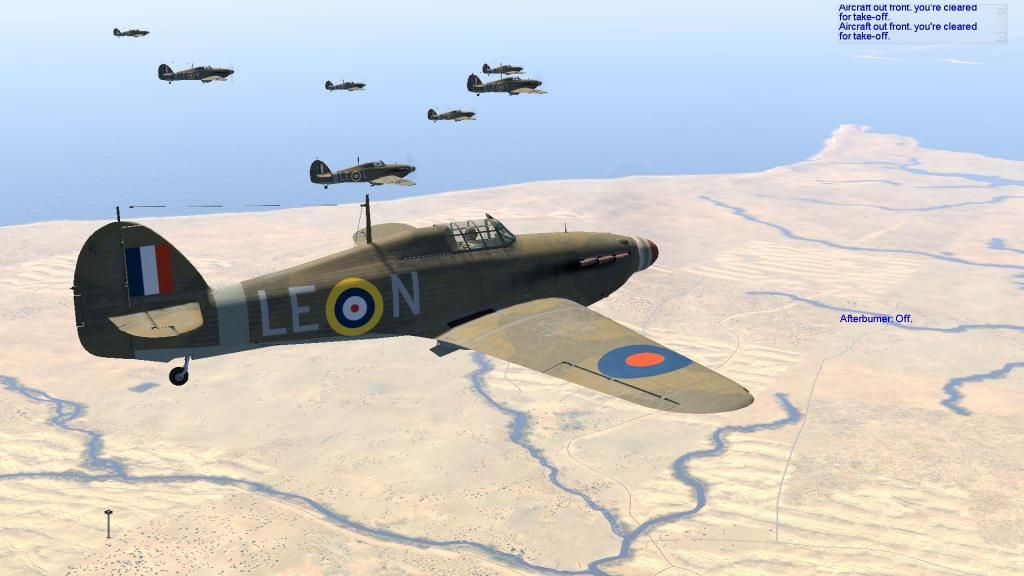
Malta 18 - Evening the odds
"At last, the request for more fighter planes for Malta was being answered, which was just as well since 261 Squadron - or what remained of it - was on its knees."
- James Holland
27 April 1940.
23 new Hurricanes flew in to Malta off the Ark Royal aircraft carrier. The new machines were designated as 249 Squadron, and had been ordered to relieve the battle weary pilots of 261 Squadron, some of whom had been flying since the first bombs began to fall.
Nevertheless, the Germans held on to air superiority. Hitler ordered Fliegerkorps X to protect Axis shipping, prevent Allied shipping passing through the central Mediterranean, and neutralise Malta altogether as an Allied base. Against the 20 RAF fighters, 180 German and 300 Italian aircraft were ready to carry out the directive.
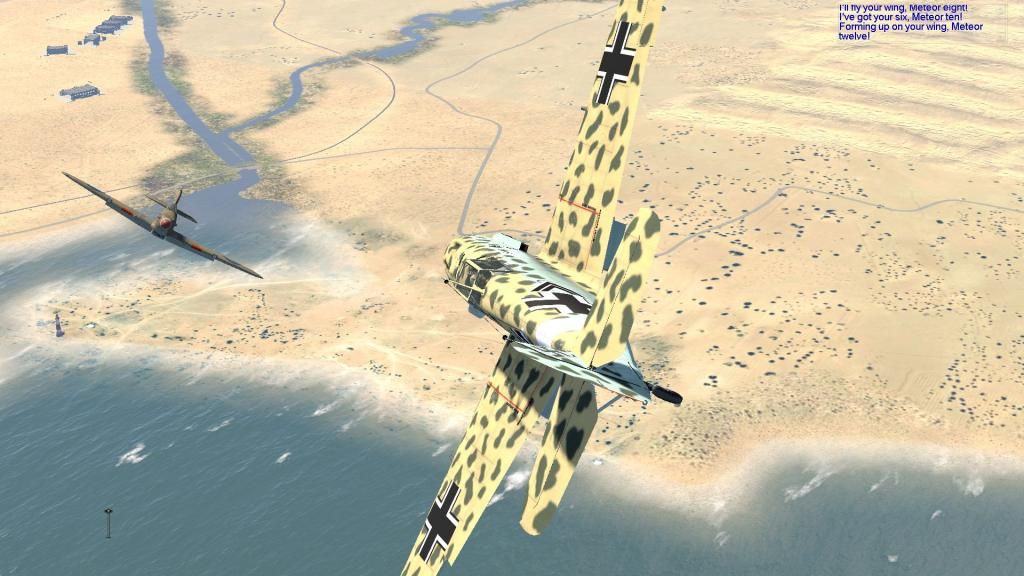
Malta 19 - Unbroken
"Suddenly, there it was, like a large dusty brown leaf on the sea - Malta. He spotted Luqa, but was horrified to see it was under attack - they had arrived in the middle of another raid. Minutes later the enemy bombers had gone, and he touched down at Luqa amid clouds of dust." (The experience of an RAF pilot landing on Malta May 1941)
- James Holland
1 May 1941
Despite constant attack on Malta from the air, and disruption of convoys by sea, the island is still grimly hanging on. No matter how many RAF aircraft the Luftwaffe destroys in one day, by the next day, they are repaired, or more are flown in.
Kesselring has been unable to persuade Hitler that invasion will be possible, as he cannot show that the RAF has been beaten. For him, it is a bitter pill, after a similar failure in the Battle of Britain. But he is determined history will not repeat itself.
He sends everything he has against the island in a single day of uninterrupted terror.
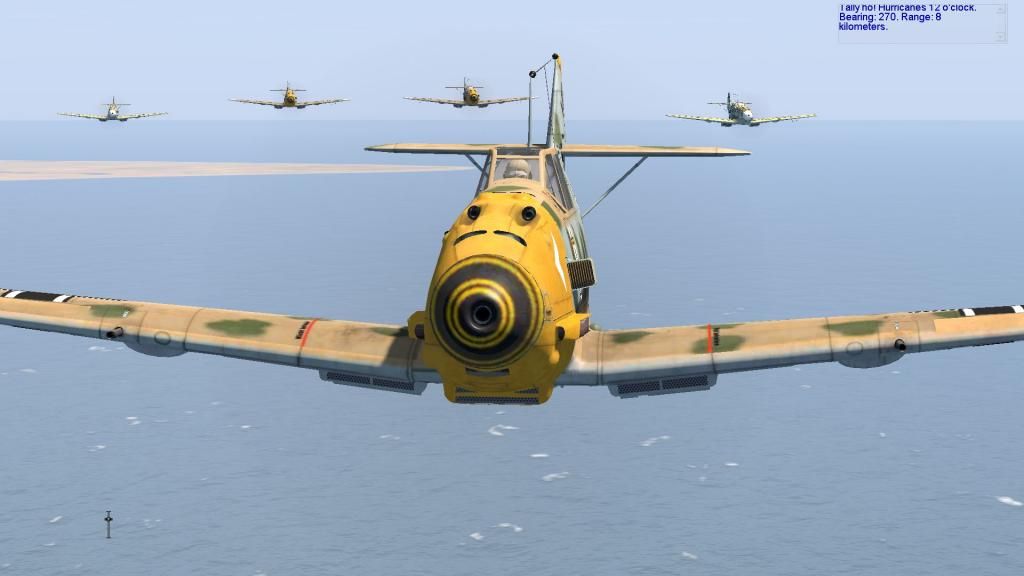
Malta 20 - Munchenbergs farewell
"Throughout May 69 Squadron reported the departure of the Luftwaffe's Fliegerkorps X. With Hitler preparing to launch Operation Barbarossa - the invasion of Russia - Fliegerkorps X was transferred to Poland".
- James Holland
25 May 1941
Since 10 January the Luftwaffe and Regia Aeronautica have been strafing and bombing Malta from dawn to dusk. The once grand buildings of Valetta are rubble, the port is a shambles. The population is starving, living on the meagre rations that a few brave merchantmen and submarines have been able to get through the blockade.
The three RAF airfields, Luqa, Takali and Hal Far are little more than ruined hangars and machine shops, with aircraft huddled in blast pens made from empty fuel barrels filled with sand or water. The Governor of Malta has sent a message to London, to advise that unless a major convoy makes it through the blockade in the next two weeks, the Island will be forced to capitulate.
However...on this day, Fliegerkorps X of the Luftwaffe is taken out of the theatre. Having failed to convince Hitler that an invasion is feasible, Kesselring is ordered to move his forces to Poland in preparation for Operation Barbarossa, the attack on Russia.

Malta 21 - Convoy to Malta
14 December 1941, evening
"Malta could be supplied either from the east or the west so far as convoy was concerned, the decision being based on tactical considerations. From Gibraltar, the passage only became subject to air attack for (approximately) its latter half, and enemy surface force bases were somewhat more distant from that route. From the east, unless the North African desert was temporarily in British hands, air attack became probable very shortly after sailing and surface attack easier due to shorter distance. The eastern route, after the complete failure of one attempt, could only really be attempted when the enemy had been driven west of Benghazi. Both routes required very heavy escort, another factor that inhibited the eastern series due to the steady attrition of the Mediterranean Fleet."
- the late Arnold Hague, Lieutenant Commander, RNR (Rtd) (c) 1995
The population of Malta is on the brink of collapse from starvation and lack of fuel. Preparing to sail the dangerous Eastern route from Alexandria in Egypt are the merchant ships BRECONSHIRE, AJAX, CITY OF CALCUTTA, CLAN FERGUSON and SYDNEY STAR, escorted by the destroyers DECOY, HAVOCK, HASTY, JERVIS, KIMBERLEY, KINGSTON, KIPLING and NIZAM.
The convoy is assembling off Alexandria, ready to sail at first light.
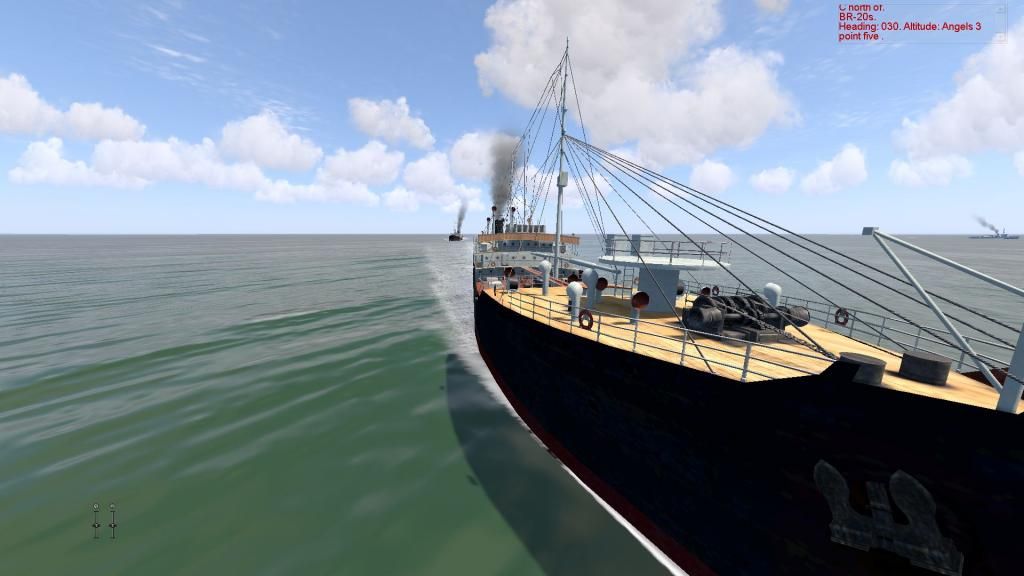
Malta 22 - Convoy ME7 sets sail
"In December 1941 the destroyer HMAS Nizam was one of the screen of a powerful force, including heavy ships, taking the special ship SS Breconshire from Alexandria to Malta. The Italian Battle Fleet was at sea and a clash was an anticipated..."
- Official record of the Royal Australian Navy
Off the coast of Alexandria, 0500 hours...
Designated as Convoy ME7, and under the escort of Destroyer Flotilla Force B, the merchant ships SS BRECONSHIRE, AJAX, CITY OF CALCUTTA, CLAN FERGUSON and SYDNEY STAR, have departed Alexandria escorted by the destroyers DECOY, HAVOCK, HASTY, JERVIS, KIMBERLEY, KINGSTON, KIPLING and NIZAM.
The convoy departed Alexandria under cover of darkness and as dawn approaches, is still under cover of RAF aircraft based out of Egypt, but also within range of Axis aircraft based in Libya and Sicily.

Malta 23 - The Battle of Sirte
"HMS Breconshire was escorted from Malta by Force B to rendezvous with Force K near the Gulf of Sirte. Soon after, the British came across Italian warships escorting a convoy to Tripoli. The ensuing engagement is known as the First Battle of Sirte."
- Official record of the Royal Australian Navy
Gulf of Sirte, 0900 hours
Italian and British ships are converging in the Gulf of Sirte. By sheer chance an Italian convoy from Sicily to Tripoli in Libya has crossed paths with the British ME7 convoy.
The destroyers DECOY, HAVOCK, KIPLING and NIZAM have been detached to engage the Italian flotilla. The rest of convoy ME7 has moved toward the coast to remain withing range of Egypt based air cover.
The Italian fleet has radioed for help and the Regia Aeronautica has despatched aircraft from Sicily to protect its convoy.
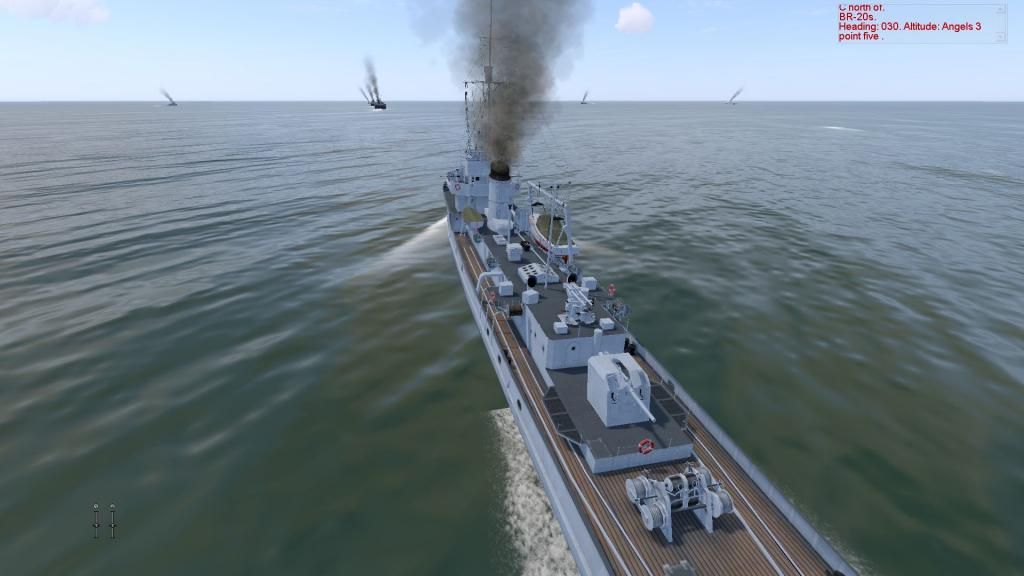
Malta 24 - Stragglers
"By the second day convoy ME7 was out of range of all Egyptian based RAF aircraft, except the Hurricanes at Abu Sawayr. Three merchant ships had been lost and two destroyers damaged and forced to retire...air attacks that day were merciless. "
- Official record of the Royal Australian Navy
Gulf of Sirte, 1100 hours
The British convoy is now steaming west toward Malta at full steam, in sector K2.
Both British and Axis forces are aware it is out of range of most RAF single engined aircraft, and the AAA fire of the covering destroyer flotilla has been much reduced by the loss of two destroyers.
Kesselring sends all available forces against the convoy while the opportunity to send it to the bottom is at its best.
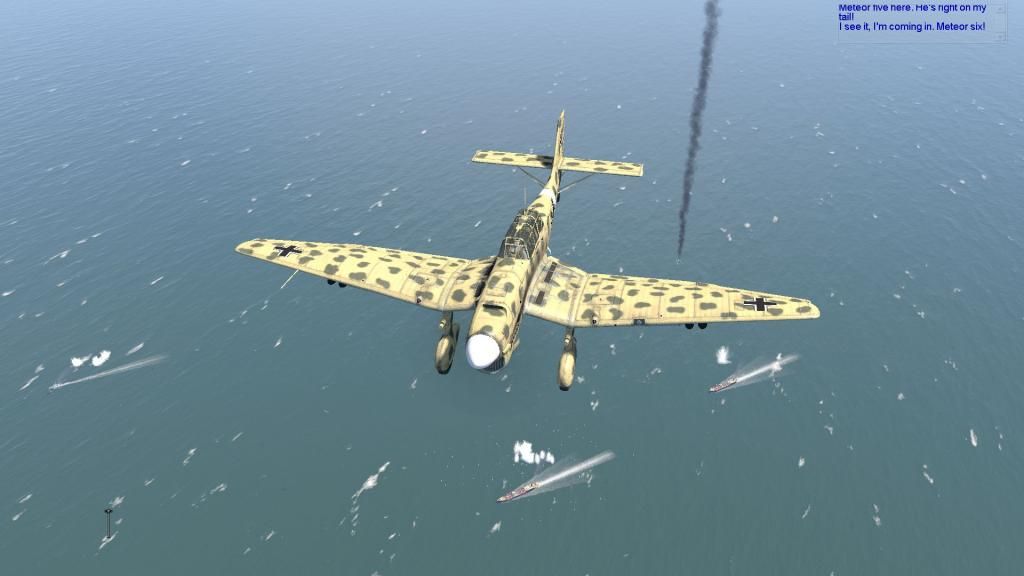
Malta 25 - The Nestor
"At about 1800 hrs, when the convoy was off the south east corner of Malta, Nestor was straddled by a stick of heavy bombs which caused serious damage to her boiler rooms. She was taken in tow by HMS Javelin but at about 0530 the next morning (16 June), with the destroyer then going down by the nose, permission was requested to scuttle. After the crew had been transferred to HMAS Nizam she was sunk at about 0700 by depth charge."
- Royal Australian Navy official record
The HMAS Nestor is disabled, and sinking, in sector G2. Her sister ship Nizam is alongside, taking aboard the crew of the Nestor. Malta coastal command aircraft are patrolling over the becalmed ships, and two destroyers have been detached from convoy ME7 to provide extra cover. While stationary, however, they are very vulnerable to further air attack.
The rest of convoy ME7 is now approaching Malta's coast from the east, in sector G3, and is now within range of cover from Malta based RAF aircraft.
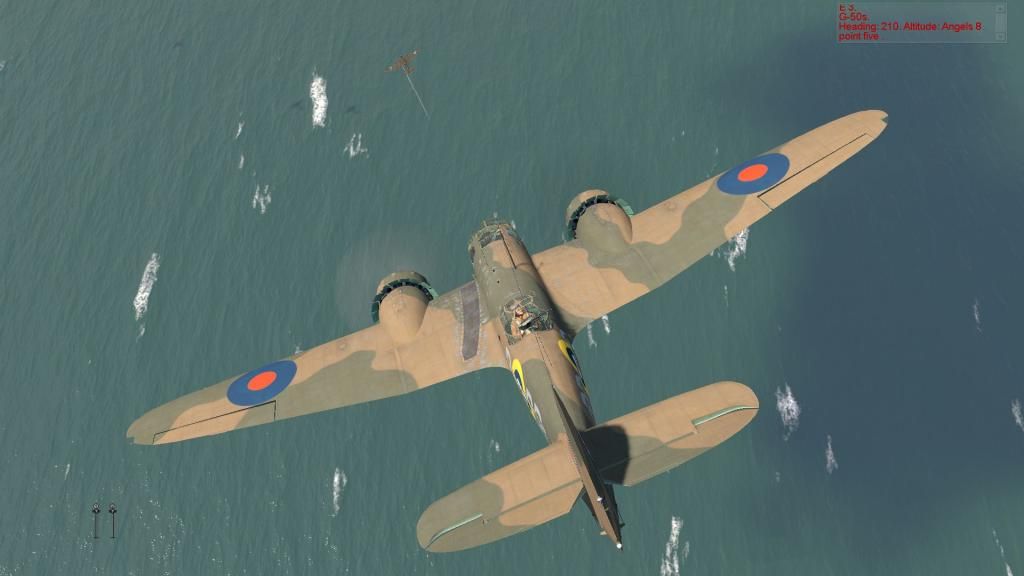
Malta 26 - Crippled and lame
Of the merchant ships BRECONSHIRE, AJAX, CITY OF CALCUTTA, CLAN FERGUSON and SYDNEY STAR which left Alexandria two days ago, only BRECONSHIRE and SYDNEY STAR have made it within sight of Malta. And the destroyer escort of HMAS DECOY, HAVOCK, NESTOR, JERVIS, KIMBERLEY, KINGSTON, KIPLING and NIZAM has been reduced to just two warships, the NIZAM and DECOY.
The pitiful remnants of convoy ME7 are now approaching the northern coast of Malta, half a day's sailing from Grand Harbour at Valetta.
British forces are desperate for these supplies to reach Malta, and as the convoy is now within range of Malta RAF airfields, around the clock patrols have been stationed over the convoy.
The convoy is also sailing close to shore, so that it can covered by shore based AAA as well.
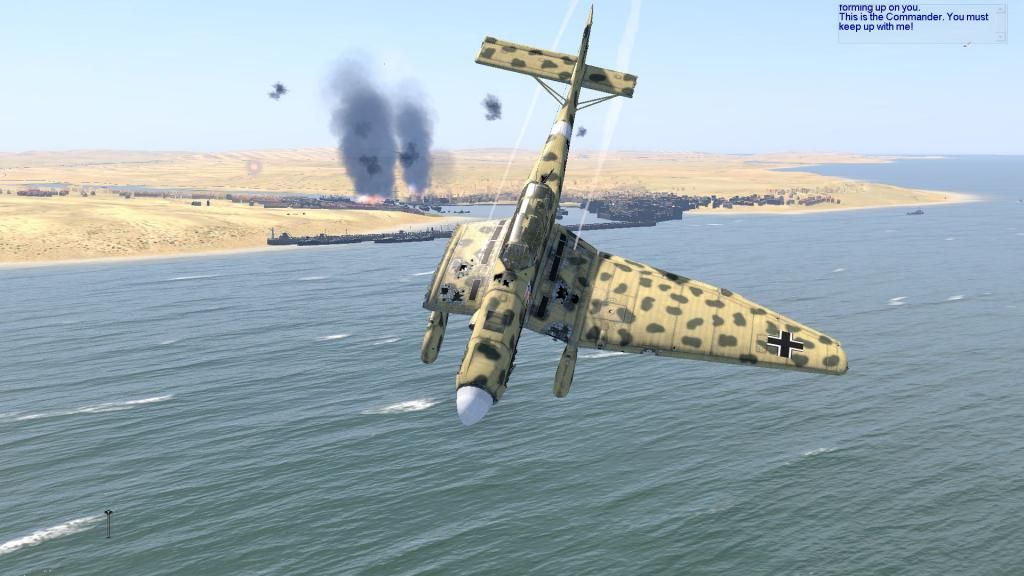
Malta 27 - Heroic welcome
Despite fierce attacks and significant damage, the HMAS BRECONSHIRE; with destroyer escort NIZAM and DECOY, has made harbour in Malta.
Carrying vital oil, food and spare parts for the RAF, the BRECONSHIRE is being hastily unloaded. The air over Grand Harbour is thick with RAF fighters covering the unloading operation.
Marshal Kesselring agrees with the RAI commander in chief, Italo Balbo, that the time is ideal for an all out combined attack on Malta. It will become the biggest air operation since May 1941.
The Governor of Malta has signalled London, that unless the supplies from the Breconshire can be successfully unloaded, the Island will be forced to capitulate.
* Caution: this mission includes a large number of flyable aircraft. Depending on your PC settings, you may want to reduce the number of aircraft in each unit. You can do this in the CUSTOM settings screen of the mission briefing.
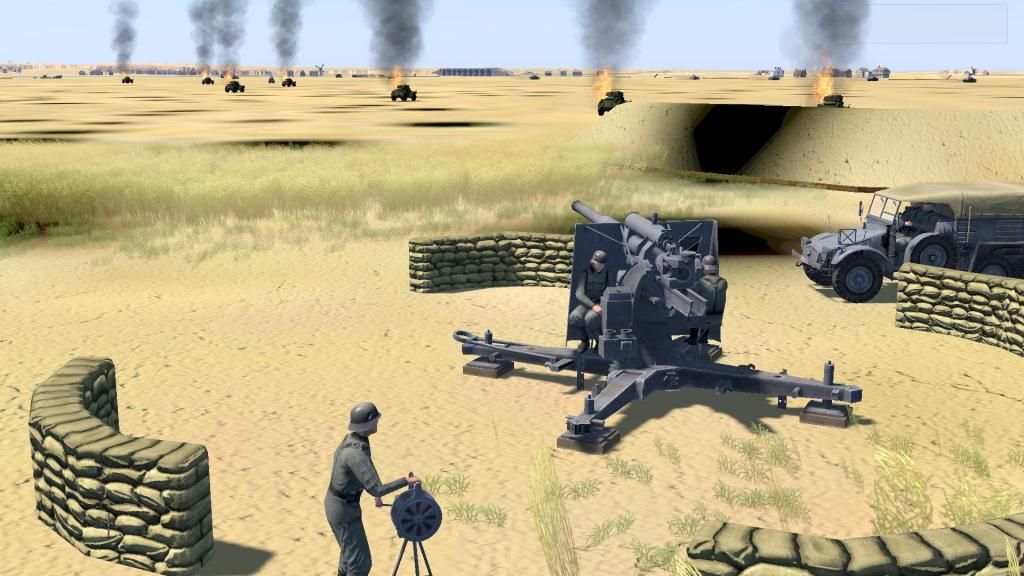
Malta 28 - BONUS - Battle for Sidi Rezegh
On 22 November 1941, as part of Operation Crusader, British forces in North Africa moved to capture the Axis Sidi Rezegh airfield.
Valentine and Cruiser tanks of the British 22nd and 4th Armoured Brigades (the famous Desert Rats) advanced in force toward the airfield, opposed by the Panzer IIIs and IVs of the 21st and 15th Panzer divisions.
In the air, fighters of JG27 covered a Stuka attack on the British ground forces by StG 3. Scrambled from Gewala, Hurricanes of the RAF Desert Airforce 274 Squadron were ordered to secure the air over the target, while Beaufighters of 252 Squadron attacked Axis ground forces.
The Battle for Sidi Rezegh was joined...
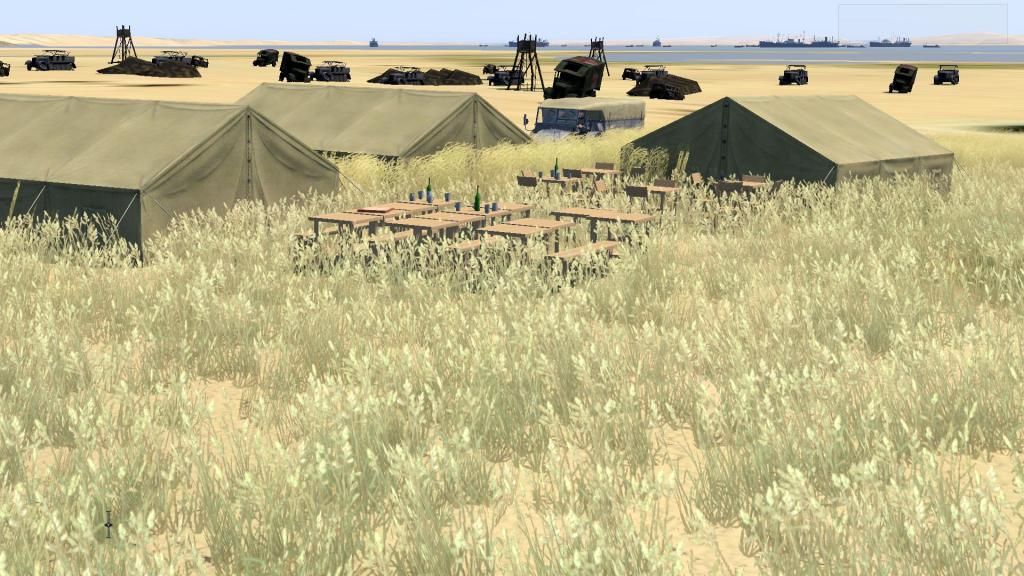
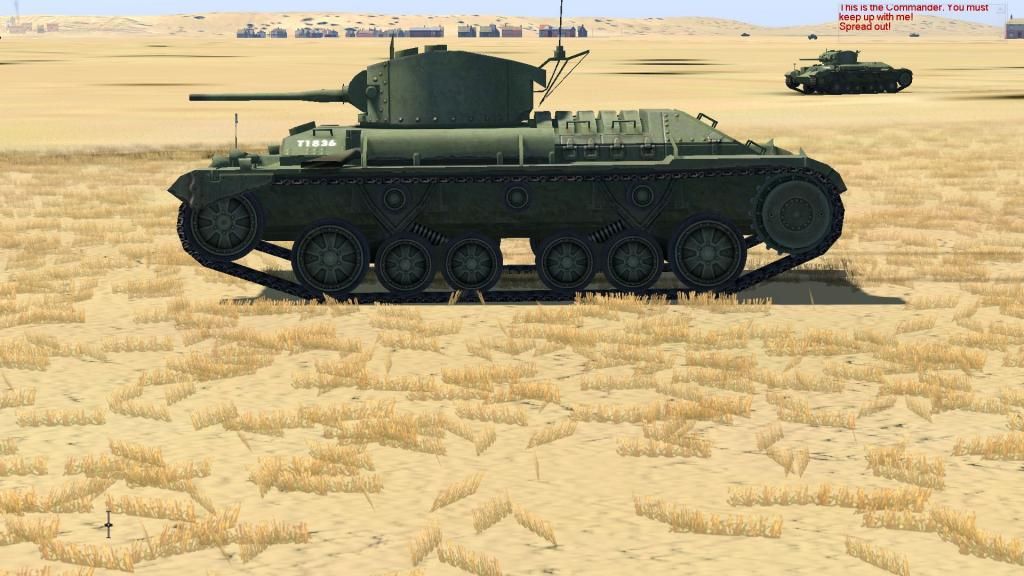
No comments:
Post a Comment